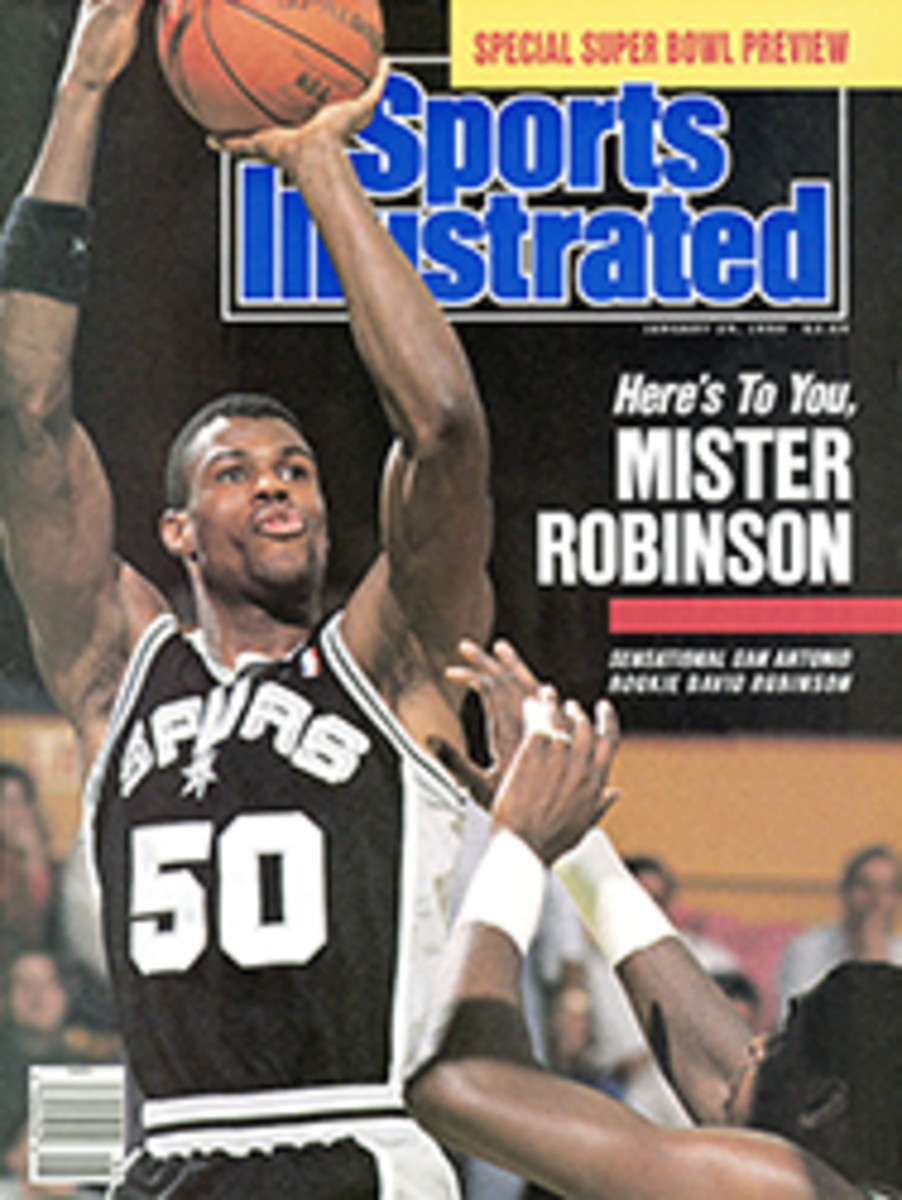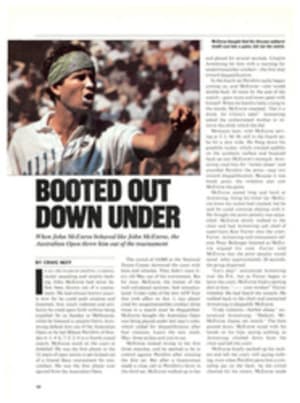
BOOTED OUT DOWN UNDER
In all his years of griping, cursing, racket smashing and umpire bashing, John McEnroe had never before been thrown out of a tournament. He had always known exactly how far he could push umpires and linesmen, how much rudeness and profanity he could spew forth without being expelled. So on Sunday in Melbourne, while he listened to umpire Gerry Armstrong default him out of the Australian Open as he led Mikael Pernfors of Sweden 6-1, 4-6, 7-5, 2-4 in a fourth-round match, McEnroe stood on the court in disbelief. He was the first player in the 22 years of open tennis to get kicked out of a Grand Slam tournament for misconduct. He was the first player ever ejected from the Australian Open.
The crowd of 14,000 at the National Tennis Center showered the court with boos and whistles. They didn't want fiery old Mac out of the tournament. But for once, McEnroe, the master of the well-calculated tantrum, had miscalculated. Under rules of the new ATP Tour that took effect on Jan. 1, any player cited for unsportsmanlike conduct three times in a match must be disqualified. McEnroe thought the Australian Open was being played under last year's rules, which called for disqualification after four citations. Learn the new math, Mac: three strikes and you're out.
McEnroe looked strong in his first three matches, and he seemed to be in control against Pernfors after winning the first set. But after a lineswoman made a close call in Pernfors's favor in the third set, McEnroe walked up to her and glared for several seconds. Umpire Armstrong hit him with a warning for unsportsmanlike conduct—the first step toward disqualification.
In the fourth set Pernfors really began coming on, and McEnroe—who would double-fault 10 times by the end of the match—grew more and more upset with himself. When he heard a baby crying in the stands, McEnroe snapped, "Get it a drink, for Christ's sake!" Armstrong asked the embarrassed mother to remove the child, which she did.
Moments later, with McEnroe serving at 2-3, 30-30, still in the fourth set, he hit a shot wide. He flung down his graphite racket, which cracked audibly on the synthetic surface and bounced back up into McEnroe's stomach. Armstrong cited him for "racket abuse" and awarded Pernfors the point—step two toward disqualification. Because it was break point, the violation also cost McEnroe the game.
McEnroe stared long and hard at Armstrong, biting his lower lip. McEnroe knew his racket had cracked, but he said he could continue playing with it. He thought the point penalty was unjustified. McEnroe slowly walked to the chair and had Armstrong call chief of supervisors Ken Farrar onto the court. Farrar, Armstrong and tournament referee Peter Bellenger listened as McEnroe argued his case. Farrar told McEnroe that the point penalty would stand. After approximately 20 seconds, the group dispersed.
"Let's play!" announced Armstrong over the P.A., but as Farrar began to leave the court, McEnroe fired a parting shot at him: "——your mother!" Farrar wheeled. He had heard the remark. He walked back to the chair and instructed Armstrong to disqualify McEnroe.
"Code violation—further abuse," announced Armstrong. "Default, Mr. McEnroe. Game, set, match." The boos poured down. McEnroe stood with his hands on his hips, saying nothing, as Armstrong climbed down from the chair and left the court.
McEnroe finally packed up his rackets and left the court, still saying nothing, even when Pernfors gave him a consoling pat on the back. As the crowd chanted for his return, McEnroe made his way to a press room under the stands. There he admitted that he should have known the new rules.
But he added, "After you've played for three hours, I think it was unnecessary to disqualify me for a four-letter word. I think there should be better discretion. They have written the laws for me. Pernfors yells and people laugh because they think Swedish is funny. If I'd known the [new] rules, I would probably have still broken my racket, but I probably wouldn't have said what I said to the guy [Farrar]. I let things rattle me."
McEnroe has often gone on more animated tirades—and made equally foul remarks—such as during the final at the Scottish Grass Court championships last year when he tossed his racket (receiving a warning), swore at the umpire (point penalty) and then continued to rant (game penalty). But officials had never dared to eject him, in large part because he's such a major drawing card. "From a promoter's point of view, it's a tragedy," said Australian Open director Colin Stubbs after McEnroe's disqualification.
Farrar later said he would have defaulted McEnroe for his foul remark alone, even if he hadn't already been cited twice for poor sportsmanship. For the record, only one other player has ever been heaved out of a Grand Slam event: Willie Alvarez, a journeyman from Colombia, at the '63 French Open.
McEnroe was fined $5,000 for cursing at Farrar, $1,000 for the default and $500 for racket abuse. That puts him in a delicate spot. New rules also mandate that any player who accumulates $7,500 or more in fines within a 12-month period be banned from the next Grand Slam tournament. With $6,500 in fines, McEnroe will have to be on extraordinarily good behavior at the French Open in May or he'll be barred from Wimbledon, which because of its grass surface is the major championship he has the best chance of winning.
After cooling down in Melbourne, McEnroe recognized that his banishment was the regrettable realization of a career's work. "This is like a long story, you know, that culminates in me getting defaulted at a big tournament," he said. "I mean, I guess it was bound to happen." Live and learn, Mac.
PHOTO
REUTERS
McEnroe thought that his obscene outburst would cost him a game, but not the match.
PHOTO
REUTER
Although he cracked his racket in a pet, McEnroe insisted that he hadn't abused it.

